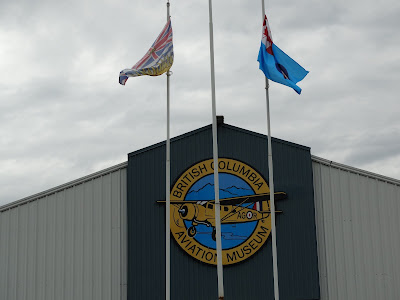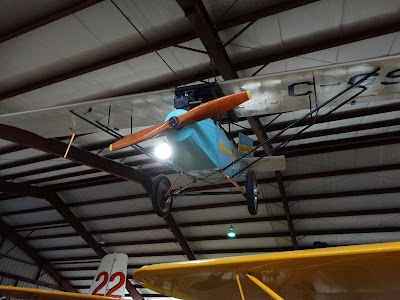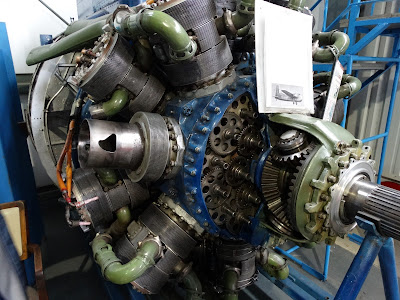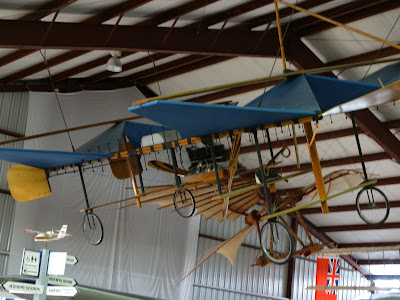Eastman E2 Sea Rover
The E-2 used a wooden hull with aluminum cladding. The aircraft used a parasol wing supported by large V-struts with secondary lower shoulder wings with tip floats at the ends. The single engine was mounted in the center of the wing root of the upper wing with a rear teardrop fairing
SE 5A 7/8 Scale
Nieuport 17 7/8 Scale
Bristol Bolingbroke bomber.
Three Quarter Scale Spitfire Replica
Eastman E2 Sea Rover
New museum project is to build a replica of this early Canadian Sea Plane from scratch using only a few surviving photographs and a rotted wing rib.
The Hoffar brothers, Jimmie and Harry became interested in aviation in about 1915 and by the early summer of 1917 the H 1 was completed. Jimmie then spent several weeks teaching himself to fly and by July 10 was confident enough to take a reporter from the Vancouver Daily Province on a flight over Vancouver. The accident occurred several weeks later.
This machine, the only one of its type, made a number of flights before hitting a submerged log while taxiing and sinking. Though later recovered, the damage from the collision and the sinking was considered too great to be repaired.
The Hoffars went on to build a flying boat, the H 2, in 1918. The only photo of the H 2 that I have seen, so far, shows it crashed after its second flight. There was another flying boat later in the 20's. The Hoffar operation then became part of the Boeing Company.
This Canadian Amphibian was crippled by the high certification cost and was cancelled after only three air-frames were completed. The Trigull was designed as an improved and updated Republic RC-3 Seabee. It features a cantilever high-wing, a four to six seat enclosed cabin, retractable tricycle landing gear and a single engine in pusher configuration.[1][3]
The aircraft is made from aluminum sheet with the forward cabin made from fibreglass. Its 41.8 ft (12.7 m) span wing employs a NACA 23015 R-4 airfoil, has an area of 245.2 sq ft (22.78 m2) and flaps. Standard engines available were initially intended to be the Continental Tiara 6-285 285 hp (213 kW) and Tiara 6-320 320 hp (239 kW) four-stroke powerplants. Later the 300 hp (224 kW) Lycoming IO-540-M1A5D and turbocharged 340 hp (254 kW) Lycoming TIO-540-J2BD were used.[1][3][4][5]
The design incorporates some innovative features, including wing tip floats that retract into the wing tips and provide additional wing area and lift, a nose wheel that retracts into the nose to act as a bumper for mooring on water and drooping ailerons.[1]
The Trigull was specifically designed to compete with the Republic RC-3 Seabee, Lake Buccaneer and the SIAI-Marchetti FN.333 Riviera.[1]
Trident Aircraft was founded in February 1970 to develop the TR-1. The aircraft first flight was on 5 August 1973, with the second prototype first flying on 2 July 1976. The TR-1 Trigull 285 model's Canadian Transport Canada aircraft certification was completed on 28 October 1976 with US Federal Aviation Administration certification following on 16 December 1976. Series production was to commence in the early 1980s, and orders were received for 43 aircraft, plus 23 options. The project received technical assistance from both Canadair and Grumman Aerospace Corporation. Despite financial assistance from the federal government's Ministry of Industry, Trade and Commerce and the provincial government's British Columbia Development Corporation, the company ran out of capital and ceased operations in 1980.[3][6][7]
Although intended for series production, only three prototypes were ever built by Trident. Two were registered and flown, CF-TRI (later C-FTRI) and C-GATE, while the third was an engineering test airframe.[8]
The type certificate has been held by Viking Air of Sidney, British Columbia since 2006. Viking Air also owns the two remaining prototype aircraft. In 2003 Viking Air indicated an interest in producing the Trigull as a turbine-powered amphibian, with a price at that time estimated at US$400,000, but since then no further news has been released.
Harvard Trainer
Noordyne Norseman
Updated Beech Expediter with twin PT-6 Pratt and Whitney Turbo Prop Engines
Norseman cargo area and flight deck
Norseman landing gear and wing attachment details.
Twin Otter production facility
Austere Army observation aircraft
Early French Turbo powered helicopter of the Canadian Coast Guard
2000 Pound Bristol Sleeve Twin Row Radial Engine rated at 2000 horse power. The cutaway reveals timing gears for controlling the movement of the moving sleeves for all cylinders.
Republic Sea Bee sold new for less than 4 thousand dollars when they were in production.
Lincoln Sport were an early home-builts named for Lincoln Nebraska.
One of the first semi successful Canadian built aircraft.
Gibson, William Wallace
William Wallace Gibson, aircraft inventor (b at Dalmellington, Scot 1876; d at San Francisco, Calif Dec 1965). After making a fortune in mining, Gibson built the first successful Canadian aircraft engine, and then the Twin-Plane aircraft, which first flew Sept 1910 near Victoria, BC, with a 60-horse power gasoline engine. A second aircraft, the Multi-Plane (with 4 narrow sprucewood wings), is reported to have flown successfully the following year near Calgary before being wrecked in a crash*. Broke, Gibson returned to mining and later moved to San Francisco.
Interior view of Avro Anson used for crew training in the early 1940's
Bristol Bolingbroke bomber was also used for crew training at this base in the early 1940's.
*Gibson Twin-Plane: Fifty-four feet long, with a 20-foot wingspan, the Twin-Plane sat firmly on its four bicycle wheels. Tom Plimley, who was just then advancing from bicycles to automobiles, had built the flimsy looking under carriage which later proved to be the aircraft’s worst failing.
Two spruce framed wings were mounted one behind the other, secured to the fuselage with clamps, and covered with pale blue silk from Juene Brothers of Victoria. By loosening the clamps, the wings could be slid up and down the fuselage until the twin-Plane was properly balanced.
Among its innovative features, the Gibson Twin-Plane boasted gull wings, now often used for added stability, baffle plates inside the gas tanks to stop fuel from surging back and forth and now found in almost all aircraft, and contra-rotating propellers mounted one behind the other, driven directly from the engine, and still found in use today.
When all was ready, Gibson secretly conveyed the Twin-Plane in pieces to its launch site, a farm field that is now the grounds of Lansdowne Middle School. After reassembling the plane, Gibson was ready for a test flight.
Gibson and two helpers pushed the twin-Plane onto the grassy meadow. Gibson climbed into the horse saddle that served as a seat and started the engine.
He pulled the long lever in front of him and tested the huge triangular elevator at the aircraft’s nose. It tilted up and down at his command and he looked over his shoulder to check the rudders. Pulling on two ropes that lead over his shoulders, he watched the two small rudders wag back and forth. The engine reved up and W.W. Gibson signaled to his helpers.
It is now generally considered that Gibson not wanting the embarrassment of a failure, used that day, September 8 as a test flight. He did get off the ground, shutting off his engine as soon as he was airborne
Two weeks later after repairing his landing gear, which was damaged in a crash landing after his initial test flight, Gibson made another flight. This time, the press and public came out in full force to witness the spectacle.
With undue optimism, Gibson had mounted two 10-gallon gas tanks above the engine, intending to taxi down the field, take off, and land in Vancouver.
At Gibson’s signal, the helpers let go and the Twin-Plane bounced across the meadow. Fifty feet later, Gibson Pulled the lever, raised the elevator, and climbed quickly into the air. He watched as the ground dropped away below him and then started to slide sideways under his wings. In an attempt to over come the cross wind, Gibson shifted his body, turning the rudders.
The Twin-Plane swung around but Gibson, in his confusion, had turned the wings the wrong way. With the wind at its tail, the Twin-Plane picked up speed and its pilot watched helplessly as as a stand of oak trees rapidly approached across the field. Completely bewildered, Gibson shut off the engine and drifted to the ground.
Gibson was thrown clear as the Twin-Plane piled into the trees, escaping without serious injury, but his beloved Twin-Plane was a wreck. He had flown 200 feet, though, a tremendous feet in those days for an airplane of new design.





























No comments:
Post a Comment